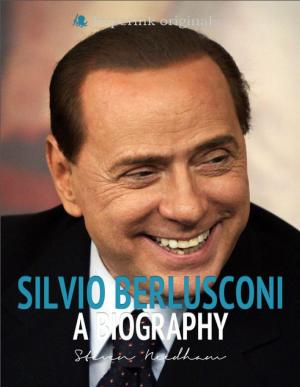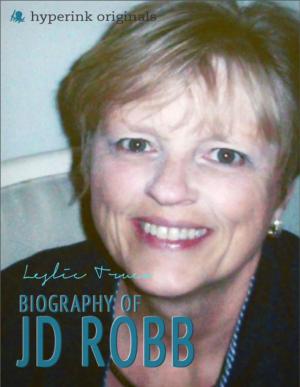| Author: | Keely B. | ISBN: | 9781614643807 |
| Publisher: | Hyperink | Publication: | February 29, 2012 |
| Imprint: | Language: | English |
| Author: | Keely B. |
| ISBN: | 9781614643807 |
| Publisher: | Hyperink |
| Publication: | February 29, 2012 |
| Imprint: | |
| Language: | English |
This book is part of Hyperink's best little books series. This best little book is 3,800+ words of fast, entertaining information on a highly demanded topic. Based on reader feedback (including yours!), we may expand this book in the future. If we do so, we'll send a free copy to all previous buyers.
ABOUT THE BOOK
In some ways, Dr. Seuss seems as unexpected and paradoxical a character as one of his own creations. His last name wasn't Seuss, he wasn't a doctor, and he never had his own children nor was he particularly comfortable around them. When he did consent to answer an interviewer's questions, his replies were often as whimsical as his children's books.
The mystery was part of the legend and served him well, for it's hard for readers to separate the real Dr. Seuss from the fantasyland he dreamed up a fantasyland that was sorely-needed in the years just before and after the Second World War. Dr. Seuss's books came out at a time when schools were using the often-boring, formulaic Dick and Jane series of books to teach reading to first and second graders. The illustrations were candy-box pretty, and there were no plots, no stories, and certainly no fantasy.
Enter Dr. Seuss, with his Grinches and Hortons and Whos from Whoville. It was a world that children and adults had never before seen in children's literature; a world that inspired children to dream big, and to channel their highest ideals and most exciting, adventurous dreams into their own lives. This world also used words in fantastical ways, with a rhythm that virtually reinvented children's poetry.
EXCERPT FROM THE BOOK
The book took flight in Ted's fancy during an ocean crossing in 1936. As the ship traveled across the Atlantic, Ted's attention was caught by the sound of the engines chugging away; soon, he found that he was fitting an entire sentence, over and over again, to the rhythm of the engine: "And to think that I saw it on Mulberry Street." He began to devise a story around this phrase, and came up with the tale of a boy named Marco envisioning a fantastical parade of creatures on his own home street. Seuss's own childhood neighborhood back in Springfield, Fairfield Street, was only a mile away from a real-life Mulberry Street.
Arriving back home, Ted wrote the book, illustrated it, and started sending it in to every publisher he could think of. After the 27th or 29th rejection (he always told the story differently), he took a walk down Madison Avenue and made the decision to throw it away.
Just then, he saw an old classmate, Mike McClintock, who had just become the children's fiction editor of Vanguard Press. McClintock listened to Ted's description of the book and asked to see it. After a quick perusal, he decided to purchase it on the spot....
Buy a copy to keep reading!
This book is part of Hyperink's best little books series. This best little book is 3,800+ words of fast, entertaining information on a highly demanded topic. Based on reader feedback (including yours!), we may expand this book in the future. If we do so, we'll send a free copy to all previous buyers.
ABOUT THE BOOK
In some ways, Dr. Seuss seems as unexpected and paradoxical a character as one of his own creations. His last name wasn't Seuss, he wasn't a doctor, and he never had his own children nor was he particularly comfortable around them. When he did consent to answer an interviewer's questions, his replies were often as whimsical as his children's books.
The mystery was part of the legend and served him well, for it's hard for readers to separate the real Dr. Seuss from the fantasyland he dreamed up a fantasyland that was sorely-needed in the years just before and after the Second World War. Dr. Seuss's books came out at a time when schools were using the often-boring, formulaic Dick and Jane series of books to teach reading to first and second graders. The illustrations were candy-box pretty, and there were no plots, no stories, and certainly no fantasy.
Enter Dr. Seuss, with his Grinches and Hortons and Whos from Whoville. It was a world that children and adults had never before seen in children's literature; a world that inspired children to dream big, and to channel their highest ideals and most exciting, adventurous dreams into their own lives. This world also used words in fantastical ways, with a rhythm that virtually reinvented children's poetry.
EXCERPT FROM THE BOOK
The book took flight in Ted's fancy during an ocean crossing in 1936. As the ship traveled across the Atlantic, Ted's attention was caught by the sound of the engines chugging away; soon, he found that he was fitting an entire sentence, over and over again, to the rhythm of the engine: "And to think that I saw it on Mulberry Street." He began to devise a story around this phrase, and came up with the tale of a boy named Marco envisioning a fantastical parade of creatures on his own home street. Seuss's own childhood neighborhood back in Springfield, Fairfield Street, was only a mile away from a real-life Mulberry Street.
Arriving back home, Ted wrote the book, illustrated it, and started sending it in to every publisher he could think of. After the 27th or 29th rejection (he always told the story differently), he took a walk down Madison Avenue and made the decision to throw it away.
Just then, he saw an old classmate, Mike McClintock, who had just become the children's fiction editor of Vanguard Press. McClintock listened to Ted's description of the book and asked to see it. After a quick perusal, he decided to purchase it on the spot....
Buy a copy to keep reading!















